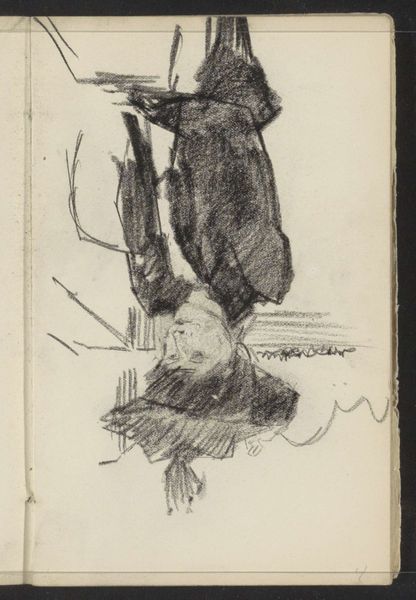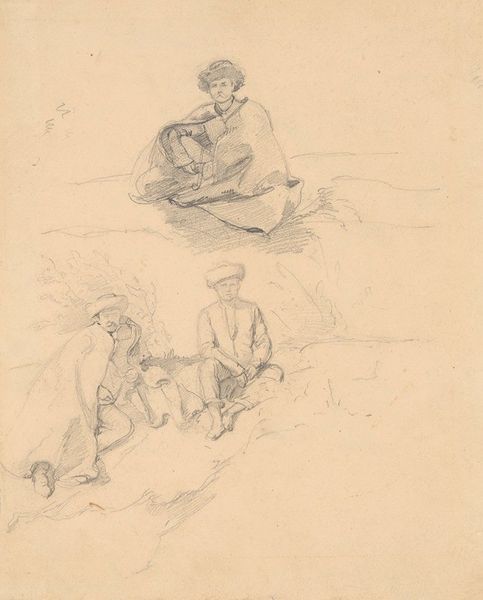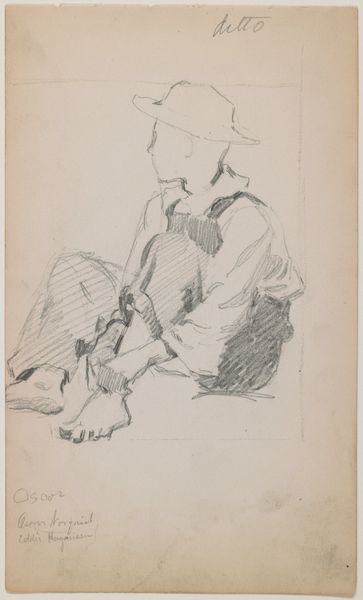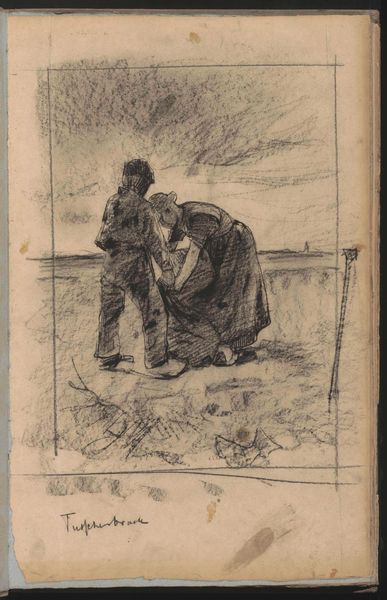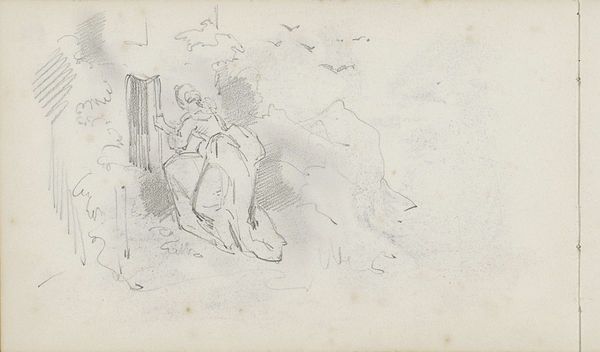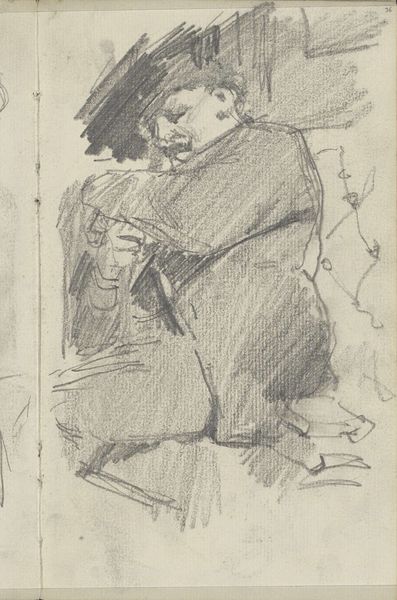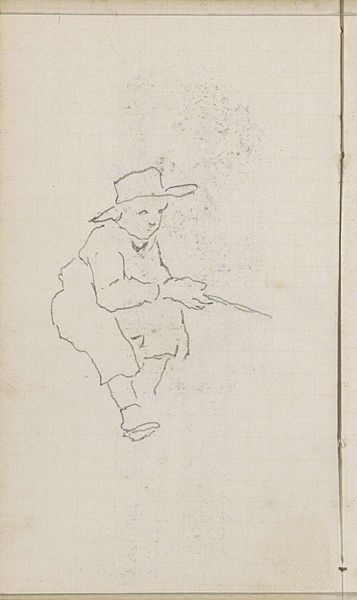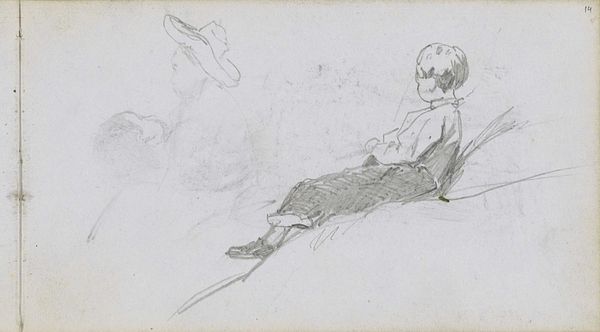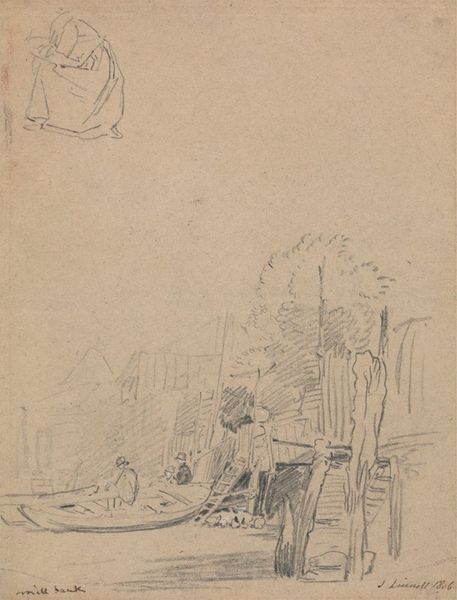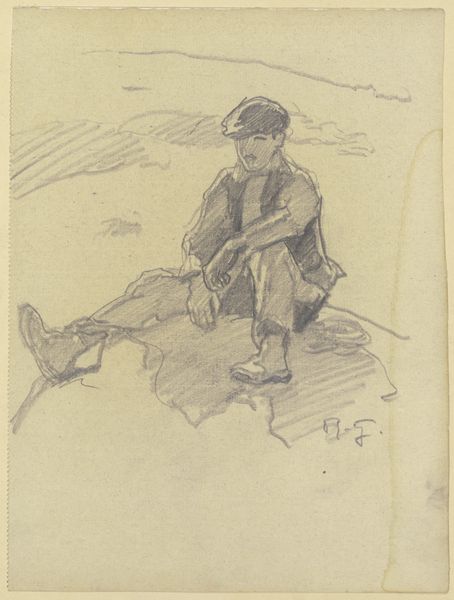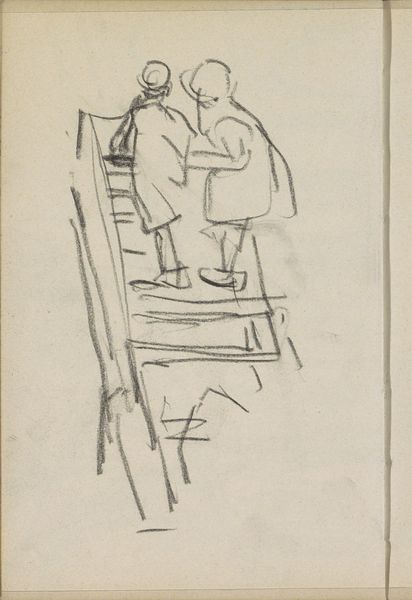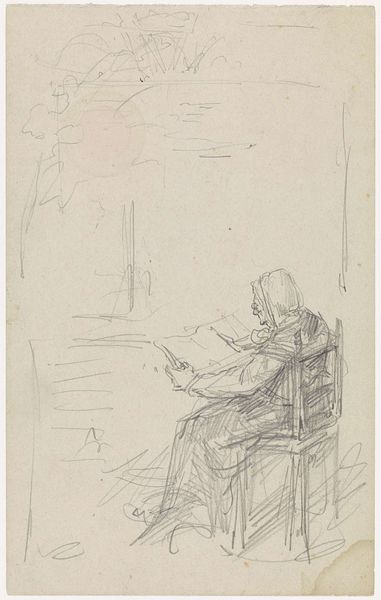
drawing, paper, pencil
#
portrait
#
drawing
#
impressionism
#
pencil sketch
#
landscape
#
paper
#
child
#
pencil
#
genre-painting
Copyright: Rijks Museum: Open Domain
Curator: Let's take a look at this drawing by Jan Willem van Borselen titled, "Two Children Sitting on the Grass by a Fence." It was likely made between 1868 and 1887 and is rendered in pencil on paper. You can find it here at the Rijksmuseum. Editor: It’s charming, almost fragile. The scene is intimate—the kind of quiet moment you might stumble upon. There’s a melancholic feeling that resonates, like looking into a faded memory. Curator: It's interesting you say that. Van Borselen's choice of pencil as a medium suggests a study, perhaps preparatory work for a larger painting. We have to remember the economics of art production—materials weren't cheap! The use of pencil allowed for accessibility, speed, and revisability. Editor: It definitely feels like a snapshot, a fleeting observation captured swiftly. Look how loosely he sketches the background, versus the more defined shapes of the children’s faces and clothes. I feel their closeness without elaborate details. It speaks volumes about their relationship, maybe siblings or close friends. Curator: Right, and we should note the potential impact of photographic practices. While seemingly traditional in its subject, such work reflected anxieties of painting amidst the rise of accessible photography. Quick sketches could also have provided accurate depictions more cost-effectively to certain demographics. It's a compelling mix of tradition and technological change. Editor: Yes, definitely. There is an honesty and lack of pretense in these children; maybe it's because the sketchy nature makes it feel somehow undone or uncontrived. As a result it transcends simply "representing" children and feels emotionally charged. Curator: And ultimately, isn't it compelling how a humble drawing can generate so many complex questions about material accessibility and art history even today? Editor: Indeed. It really highlights the tension between technique, material reality, and its capacity to elicit such potent and tender feelings.
Comments
No comments
Be the first to comment and join the conversation on the ultimate creative platform.
